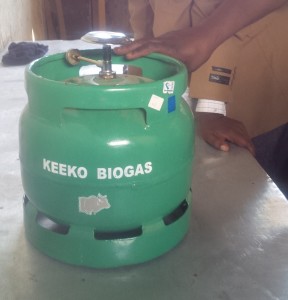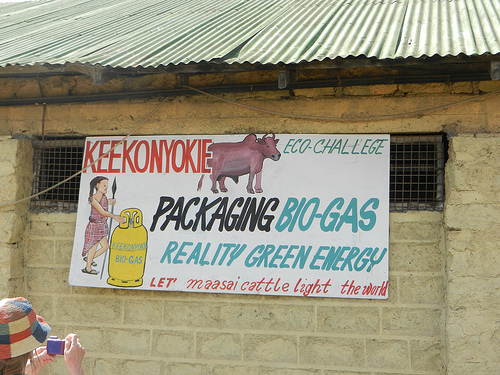Kenyan Maasai Set To Disrupt Local LPG Industry With Their Alternative Biogas
Kenyan Maasai pastoralists living around the Keenkonyokie slaughterhouse have begun an innovative venture where they produce large scale biogas for commercial purpose from animal blood and waste from the slaughterhouse.
 The Maasai have consolidated their efforts into a group of 320 pastoralists and started a venture dubbed Keeko Biogas. The venture wants to start filling 6 Kg gas cylinders by March, 2015. The charge per refill is said will be around Sh.700 ($8), which is considerably lower than the current Sh.1,200 ($13) charged by established Liquid Petroleum Gas (LPG) distributors.
The Maasai have consolidated their efforts into a group of 320 pastoralists and started a venture dubbed Keeko Biogas. The venture wants to start filling 6 Kg gas cylinders by March, 2015. The charge per refill is said will be around Sh.700 ($8), which is considerably lower than the current Sh.1,200 ($13) charged by established Liquid Petroleum Gas (LPG) distributors.
The Keenkonyokie slaughterhouse says it can sell its biogas at a price lower than its competitors’ market price because it is working cheaper cost of production. The slaughterhouse on average slaughters 120 cows and 400 sheep and goats this translates to a reliable constant supply of raw materials needed to manufacture the biogas.
Michael Kibue, the project leader, says, “raw input is assured and at zero costs.”
Kibue furthers says that it costs them nothing to pump the gas into cylinders, since the process is being powered by the slaughterhouse’s own biogas. In comparison to the conventional LPG gas, the biogas is said to be hotter and highly combustible, thus allowing users to cook faster.
The Keeko Biogas Project is being given technical support by Kenya Industrial Research and Development Institute (KIRDI). KIRDI official says that biogas is between 30 to 40 percent energy efficient compared to butane and propane gas.
The slaughterhouse has been using the gas it produces to generate enough electricity to meets its power needs for the meat cold rooms and processing equipment. Excess biogas is also being piped to neighboring hotels, and the waste is also used in making fertilizer used to enrich grazing grounds.
Keenkonyokie slaughterhouse began producing biogas as an innovative waste management mechanism. Prior to this, the slaughterhouse spent weekly an average of Sh36,000 ($340) in proper waste disposal as stipulated by the Kenya National Environmental Management Authority (NEMA). The slaughterhouse has now diversified its portfolio from just dealing with the sale of meat to now a producer of biogas.
The biogas digester facility currently only sits on a 4 acres land and generating biogas to fill one hundred 6 Kg cylinders per day. According to KIRDI, if the slaughters house was to upgrade its facility by installing a secondary biogas digester then it would triple its daily production of gas.
The project is said to receive extra funding to install a secondary digester from the Kenya Climate Innovation Centre; a World Bank initiative. The project delivers at least two socio-economic benefit; it reduces the numbers of trees cut down to be used as fuel, and it also provides the members a source of revenue.





